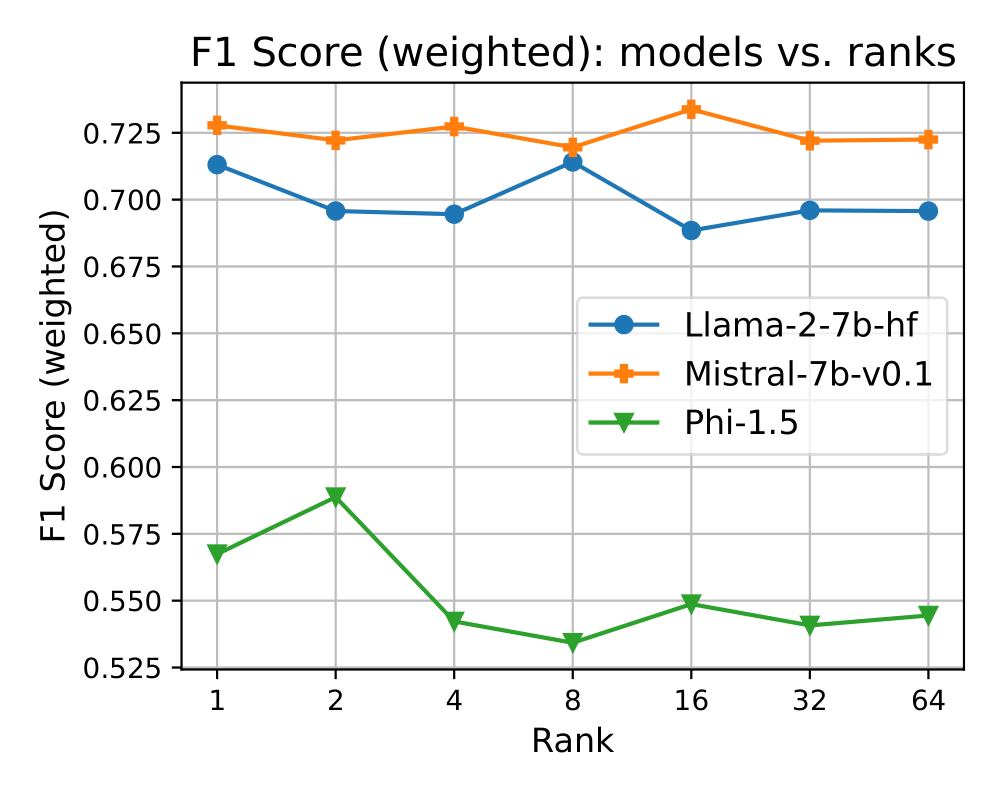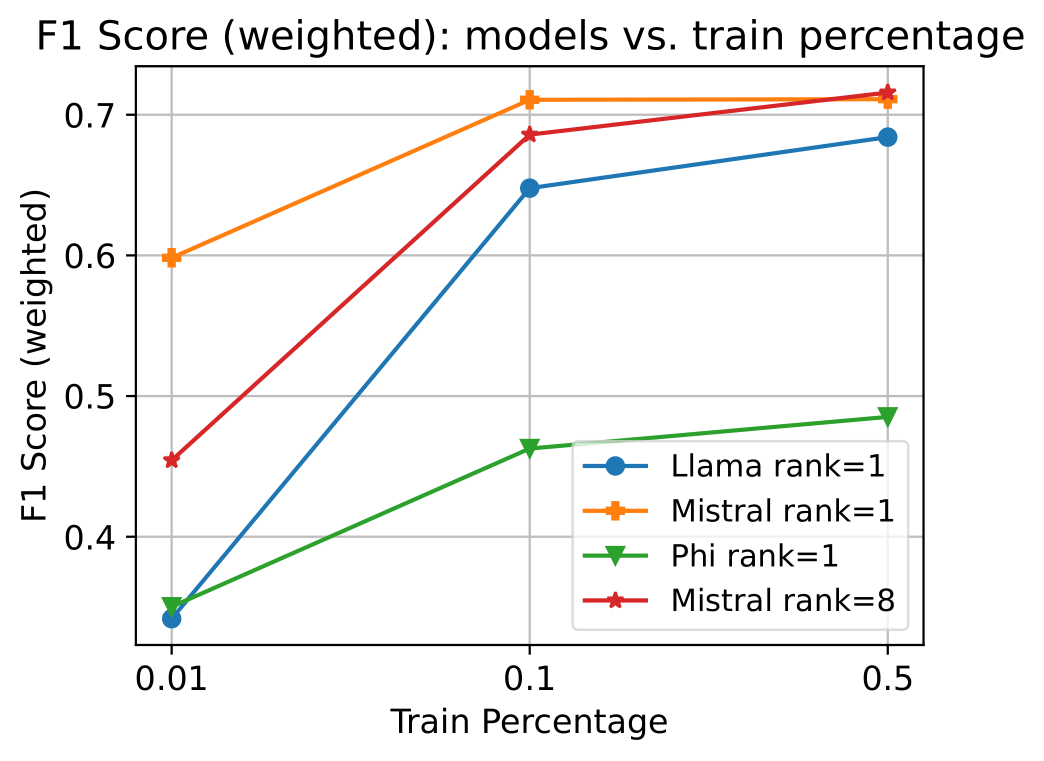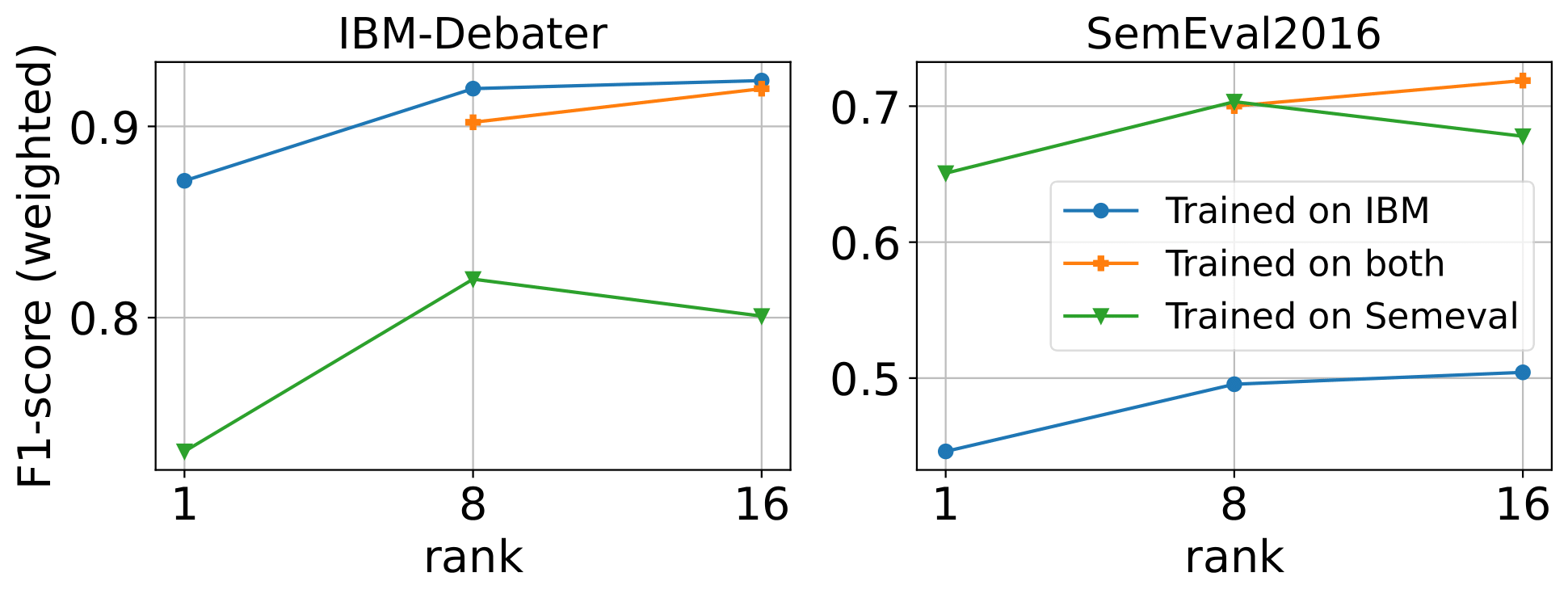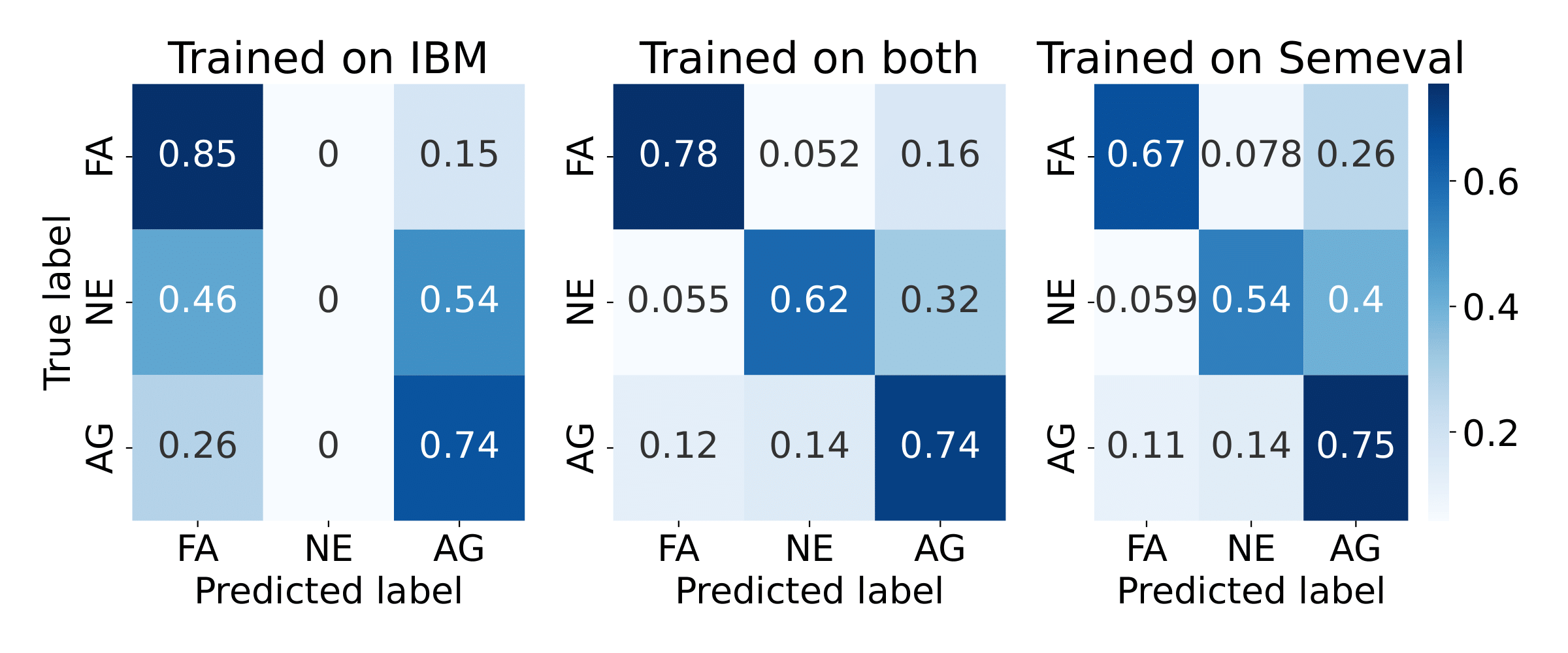Stance Detection
Fine-tuning Large Language Models for argument stance detection in unseen domains
Stance detection is the task of determining whether an argument is in favor of, against, or neutral towards a given topic. This has significant applications in social media analysis, misinformation detection, and political discourse understanding. Our work explores how well Large Language Models (LLMs) can be fine-tuned for this task and, importantly, how well they generalize to unseen datasets.
This project is part of CommPass, a larger initiative aimed at creating awareness about media polarity by providing readers with visualizations showing where content sits in the “space” of media events like the Russia-Ukraine war or COVID-19.
Methods
Models and Fine-Tuning Approach
We experimented with three LLMs:
- Mistral-7B - 7 billion parameters with advanced features like Grouped Query Attention
- Llama-2-7B - 7 billion parameters
- Phi-1.5 - A smaller 1.3 billion parameter model trained primarily on textbook data
Rather than fine-tuning all parameters (which would be computationally expensive), we used Low-Rank Adaptation (LoRA$^{[1]}$) - a parameter-efficient technique that inserts trainable rank decomposition matrices into selected layers while freezing the pre-trained weights. This dramatically reduces the number of trainable parameters while maintaining performance.
Datasets
We trained and evaluated on two distinct datasets to test generalization:
-
SemEval2016 - Twitter data focusing on six targets (Abortion, Atheism, Climate Change, Feminist Movement, Hillary Clinton, Donald Trump) with three labels: Favor, Neutral, Against
-
IBM-Debater - Claims and evidence from Wikipedia articles covering 33 controversial topics, with only two labels: PRO and CON
A key difference: SemEval uses short targets (1-2 words) while IBM-Debater uses complete sentences.
Experiments
Finding the Right LoRA Rank
We tested LoRA ranks from 1 to 64 on the full SemEval dataset. The results showed that Mistral consistently outperformed Llama and Phi, but interestingly, there was no clear trend with rank size - lower ranks performed just as well as higher ones.

Low-Data Regimes
We tested how well models perform when fine-tuned on limited data (1%, 10%, and 50% of the training set). Mistral again proved superior, especially in low-data scenarios. We found that rank choice depends on data volume - rank 1 works better with less data, while rank 8 improves with more data (likely because higher ranks overfit small datasets).

Main Results
Our best model - Mistral with LoRA rank 16, trained on 70% of both SemEval and IBM-Debater datasets - significantly outperformed all baselines:

Performance Table
| Model | Abortion | Atheism | Climate Change | Feminist Movement | Hillary Clinton | SemEval (avg) | IBM (avg) |
|---|---|---|---|---|---|---|---|
| BERTweet (baseline) | 0.65 | 0.76 | 0.79 | 0.65 | 0.69 | 0.70 | - |
| RoBERTa (baseline) | 0.54 | 0.79 | 0.80 | 0.64 | 0.71 | 0.68 | - |
| StanceBERTa (baseline) | - | - | - | - | - | - | 0.61 |
| Mistral Zero-shot | 0.54 | 0.33 | 0.55 | 0.57 | 0.66 | 0.54 | 0.44 |
| Mistral Fine-tuned (Ours) | 0.71 | 0.73 | 0.84 | 0.76 | 0.80 | 0.76 | 0.92 |
Surprising Findings
-
Cross-dataset generalization: Models fine-tuned on SemEval alone generalized remarkably well to IBM-Debater, outperforming the baseline despite never seeing that data format during training.
-
Training on both datasets improved neutral class recall on SemEval, even though IBM-Debater has no neutral labels - suggesting the model learned more nuanced representations.
-
Fine-tuning on SemEval and extrapolating to IBM might lead to better results than directly fine-tuning on IBM alone.

References
- LoRA: Edward J. Hu and Yelong Shen and Phillip Wallis and Zeyuan Allen-Zhu and Yuanzhi Li and Shean Wang and Lu Wang and Weizhu Chen (2021). LoRA: Low-Rank Adaptation of Large Language Models. arXiv preprint arXiv:2106.09685. https://arxiv.org/abs/2106.09685